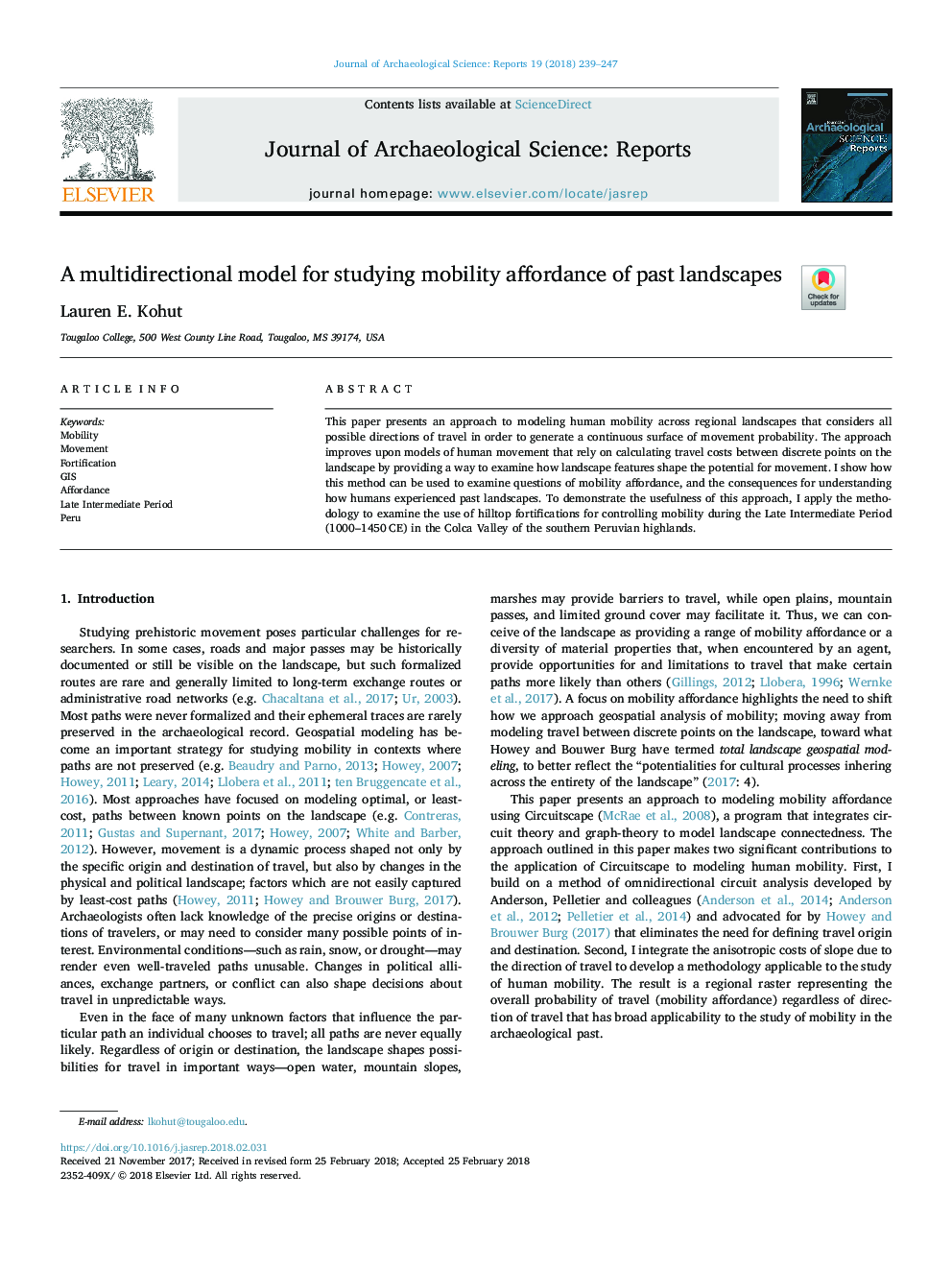| Article ID | Journal | Published Year | Pages | File Type |
|---|---|---|---|---|
| 7444654 | Journal of Archaeological Science: Reports | 2018 | 9 Pages |
Abstract
This paper presents an approach to modeling human mobility across regional landscapes that considers all possible directions of travel in order to generate a continuous surface of movement probability. The approach improves upon models of human movement that rely on calculating travel costs between discrete points on the landscape by providing a way to examine how landscape features shape the potential for movement. I show how this method can be used to examine questions of mobility affordance, and the consequences for understanding how humans experienced past landscapes. To demonstrate the usefulness of this approach, I apply the methodology to examine the use of hilltop fortifications for controlling mobility during the Late Intermediate Period (1000-1450â¯CE) in the Colca Valley of the southern Peruvian highlands.
Related Topics
Social Sciences and Humanities
Arts and Humanities
History
Authors
Lauren E. Kohut,
